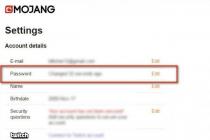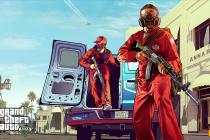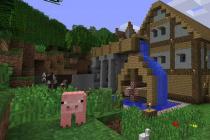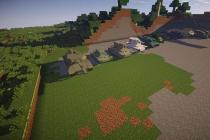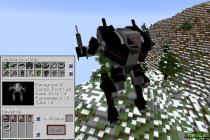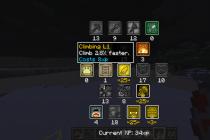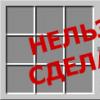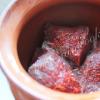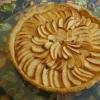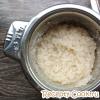Lesson summary on speech development
Topic: “Journey into the past of money. Money, what are they?”
(school preparatory group)
Tasks:
- Give children an idea of a monetary unit.
- Give children the idea that money is a universal and convenient means of exchange.
- Teach children to understand the purpose of money.
- Introduce children to the monetary units of different countries.
- Teach children, solve economic problems.
- Exercise children in counting.
- To develop children's interest in the past of the subject.
- Develop children's imagination.
- Develop coherent speech in children.
- To develop children's attention and thinking.
- Cultivate a careful attitude towards money.
- Foster respect for the work of adults.
Preliminary work:
- Conversation on the topic: “People’s lives in different countries of the world.”
- Excursion to the accounting department.
- Reading fiction: L. Knysheva “Economics for kids, or how Misha became a businessman”; L. Tolstoy “The Adventures of Pinocchio”.
Material:
- Samples of banknotes in a box
- Morphological table
- Scheme map
- Dolls: gnome Economy, Cinderella
Progress of the lesson:
The group includes the gnome Economy and Cinderella. They greet everyone.
Dwarf:
Guys, help Cinderella. She came to visit you and found some kind of plan. She can't figure it out.
The children look at the plan and understand that this is the plan where the treasure is buried. Children carefully examine the plan map and begin searching for the treasure. Children find a treasure - a box with banknotes. They open the box and examine the contents together with the heroes.
Cinderella:
What is this? Why are they needed?
Children:
This is money. They are needed to pay for purchases. You can buy something with them.
Dwarf:
That's right kids. And now I will tell you the story of how money appeared. Money appeared in the world a long time ago.
They were born a long time ago,
They have one purpose;
In the store you take
Anything you want
Just go to the cashier
And, of course, you will pay.
How do you think people paid when there was no money yet?
Children:
Maybe with pebbles or sticks?
Dwarf:
Ancient people actually paid with pebbles, and later with shells. They were collected on a string, like beads. Before that, people simply exchanged goods for goods. For example; bull for two axes. Do you think it was convenient to use such a calculation?
Children:
Not good.
Dwarf:
Can you imagine, an ancient man goes to the store, and holds a bull or a cow under his arm. It's comfortable? Why?
Children:
This is inconvenient because they take up a lot of space. They cannot be put in your pocket like paper or metal money.
Dwarf:
That's right guys. Otherwise, imagine the picture: a man wants to exchange a mammoth for a spear. How many copies can you give for a mammoth? It’s hard to figure out how to carry this mammoth. Or a person wants to exchange eggs for a skin, he needs 10 eggs, while he was on his way he broke two, but for 8 eggs they don’t give a skin. Again not convenient. Primitive people began to think, thought and realized that they needed a common means of exchange. First there were shells. Later metal money appeared. But they were also not very comfortable, heavy and took up a lot of space. And finally, man came up with paper money. What kind of money do you and I use now?
The gnome listens to the children's answers.
Dwarf:
What do you think is more convenient to use? Why?
Children:
Paper money, since it takes up little space and is lighter than metal money.
Dwarf:
So, money is a means of exchange permitted by the state and law.
Cinderella:
What does “permitted by law” mean?
The children answer Cinderella.
Dwarf:
It's very simple: try, draw a ruble. You won’t buy anything with such a piece of paper, because the law allows you to use only money issued by the state. Anyone who prints or draws banknotes himself is called a counterfeiter. Such people are punished. If you look closely at the banknote, you can see the inscription “Ticket of the Bank of Russia.” Cinderella, do you remember what kind of money there is?
Cinderella:
Paper and metal.
Dwarf:
Let's look at the table, “What kind of money is there?” and remember it
Didactic game “Good - bad” (to consolidate children’s knowledge about money):
Is a lot of money good?
Is a lot of money bad?
Is it good to be rich?
Is being rich bad?
Cinderella:
I learned a lot about money. And I have a task for you. Choose something that cannot be bought and explain your answer.
Cinderella shows a poster with pictures. Children watch, discuss and answer.
Pictures: TV, sun, dacha, candy, rain, apartment, wind, toys, mountains, boy and girl, etc. Individual use of cards is possible. Then a joint discussion.
Dwarf:
I suggest you solve the problems.
- Mom gave Masha 3 rubles and Denis 5 rubles. Can children buy markers for 10 rubles? Explain why.
- If a notebook costs 2 rubles, and a book costs 7 rubles more, then how much does the book cost?
- What do you think costs more: winter or summer clothes? Why?
- Whose shoes do you think are more expensive than mother's or daughter's? Why?
Well done, you completed the tasks.
Cinderella:
Thank you guys, I learned so much today.
Educator:
Guys, let's draw money for our store. But you and I know that this money is not real, but for the game.
Dwarf:
And Cinderella and I will come to your store next time for shopping. Until then, goodbye.
Cinderella and the dwarf leave.
Children and their teacher “make” money for the game of shopping.
Subject:"Orientation by symbols"
Tasks:
1. Teach children to navigate using signs.
2. Expand knowledge about elementary economics.
3. Improve the classification of geometric shapes.
4. Develop logical thinking in logic games.
Demo material: 6 hoops of two colors; geometric figures; logical squares (3 pieces); illustration or photograph of the family; 8 wallets with money; 2 baskets; circle divided into 4 parts; banknotes.
Handout: set of geometric shapes.
Progress of the lesson
Children sit at tables on which there are sets with geometric shapes of different sizes and colors.
- Let's play the game “Find the right shapes.” I show you diagrams of the figures that you should put in front of you. You will work in pairs.
1st task
2nd task

- And now I offer you magic squares. You look at them carefully and determine which figures need to be placed in the empty squares.
Children work with logical squares.
.jpg)
.jpg)
.jpg)
.jpg)
.jpg)
.jpg)
.jpg)
.jpg)
Then the teacher thanks the children for the completed tasks and invites them to go to 2 tables, having previously divided into 2 subgroups. The teacher shows an illustration or photograph of the family.
— How can these people be called in one word? (Family.)
- Each of you also has a family. How many people does your family consist of? Who is included in it? (Children's answers.)
- Today I invite you to play family yourself. You are divided into 2 teams - we will have 2 families. You decide for yourself who will be who in your family.
On the tables there are empty baskets and 4 wallets (on the wallets are faces, so you can guess which is whose). Mom and dad have one wallet between them.
- Let's see what's on your table.
- What's in the basket? (Empty for now.)
— What is in the wallet? (Money.)
— How did the money get into mom and dad’s wallet? (They received a salary for their work.)
— How did your grandparents get the money? (They received a pension.)
— Where does the student get the money? (Received a scholarship.)
- Why was the baby’s wallet empty? (Because the baby is still small and cannot earn money on his own.)
— Guys, what do you think, can a baby be useful to his family in some other way? (Help around the house.)
On the board on a magnet there is a circle divided into 4 parts.
- Let's repeat it once again: dad and mom work and receive wages for it. (Places a bill on the sector of the circle where the faces of mom and dad are depicted.)
— Grandmother and grandfather can no longer work and receive a pension; they also have a common wallet. (A bill is placed on their sector.)
— A student studies at an institute and receives a scholarship for good studies, because studying is also work. (A bill is placed on its sector.)
An empty card is placed on the baby’s sector, since he has no income.
— How can you describe in one word all the money that comes into the family? (Children's answer options.)
— All the money that family members receive is called family income.
— Look at the circle and tell me how many parts does your family’s income consist of? (Out of three.)
— How many parts do not generate income? (One part.)
- Now take the money out of your wallets and calculate the total income of your family.
- What did you count - money from all the wallets or each from his own? Why?
Children explain how they thought and why they did so.
— Which family do you think did the right thing? You're right. If people live together and are called one family, they must use the same wallet.
The teacher invites the children to put all the money in one basket if they do not offer it themselves.
- What can we call the money that is in the basket? (Household income.)
— And this money is also called the family budget.
- So what does your family’s budget consist of? (From mom and dad's salary, grandparents' pension and student scholarship.)
— Imagine this situation: your aunt came to live with you. Will your family's budget increase or decrease?
- So, we have found out what a family budget is and what it consists of.
The teacher thanks the children for their work and ends the lesson.
SVETLANA
Summary of GCD in the preparatory group on financial literacy “Money. Coin. Banknote. A plastic card"
Municipal state preschool educational institution "Kindergarten of a general developmental type with priority implementation of the artistic and aesthetic development of pupils No. 1 "Teremok""
Summary of GCD in the preparatory group
on financial literacy
Topic: “Money. Coin. Banknote. A plastic card"
Compiled by: teacher of the highest qualification category
Rein Svetlana Ivanovna
Target: reveal the essence of the concept of “money”, “coin”, “banknote”, “plastic card”; cash and non-cash money; consolidate children's knowledge about the appearance of modern money.
Tasks:
Educational: introduce money.
Developmental: expand the understanding of the elements of the economy (money and its history); develop skills in research activities (draw conclusions)
pay attention to the effectiveness of information sources; (find the source of information independently); form an idea of the weight of objects by weighing them on the palms.
Educational: to cultivate friendly relationships in team work, the ability to distribute responsibilities in accordance with the general plan, without interfering with each other; cultivate respect for work and careful handling of money.
Form of implementation: direct educational activity.
Pedagogical means: conversation, didactic game, visual activity, watching a cartoon, presentation.
Equipment:
Wallet with a set of different coins and banknotes;
Image of a plastic card;
Paper and colored pencils;
Laptop, projector.
Preliminary work: children should be asked to examine banknotes and coins before class, so that in the future children can freely name the distinctive and similar features between a coin and a banknote.
Organization of children's activities.
1. Organizational moment
Educator: Guys, our cat Belobok found an interesting object and brought it to us.
The teacher shows the wallet.
Educator: What is this?
Educator: What is this wallet for?
Educator: That's right, to add money. But I’m very interested to know, why do people need money?
2. Game “Why do we need money?”
Educator: Let's play the game “Why do we need money?” I throw the ball to the child and tell him what we need the money for, and you continue. Children answer.
Educator: So, we need money:
for purchasing food;
to pay for household services;
to pay for entertainment (the teacher asks the children what entertainment we need money for);
to pay for services (specify which ones);
to pay for transport fares;
for buying gifts;
to help the poor (the teacher clarifies that such activities are called charity), etc.
The teacher interviews all children in turn. If children do not indicate all the meanings of money, you can offer a solution to this issue in the form of problem situations.
Educator: If we go by bus, do we pay?
Educator: If we wanted to eat and went to the store, what do we pay for? Etc.
3. Conversation about money (viewing the presentation)
Educator: What's in the wallet?
Children: money, money.
Educator: We need to check. I open it. And really money.
Educator: What kind of money do we have here? And there is still a shell.
Children: Five rubles, 10 rubles. 5 kopecks.
Educator: Guys, why was there a shell among the money?
Educator: Think about it. Maybe because it's almost round? You are interested?
Educator: I’m interested too. Why is the shell here?
Let's go back in time to money and find out where money came from. How can you go back in time?
Children: plane, rocket, time machine.
Educator: That's right, on a time machine. I'll tell you a secret, the time machine is in front of you. Children go into the time machine (music sounds). Here is a “moving stick”, pass it to each other. Here we are in the past.
Educator: The past of money began with the ancient world. (presentation 2 slide).
Primitive man did not have money, he did not need it, and everything he needed was given by nature. Some of the ancient people were good at fishing, and some were the best at growing wheat (presentation 3 slide).
So people started exchanging. They traded fish for grain, skins for vegetables, or other goods. Ancient people used animal fur as money. Grains, salt, nuts, shells (presentation 4 and 5 slides).
Then metallic money appeared - it was not the kind of money that we have now. And rings, bars, beads (presentation 6 slide).
Then money similar to modern ones appeared (presentation 7, 8 slide).
After metal money, paper money appeared (presentation 9 slide).
Educator: So did ancient people have money?
Educator: What were they like?
Children: Bones, blocks, shells.
Educator: Can we answer the question now? Why was there a shell in the wallet?
Children: This is ancient money.
Educator: Absolutely right. The shell was used as a medium of exchange.
4. Watching a cartoon
Educator: Absolutely right. And now, using our time machine, we go to visit Aunt Owl. (Watching the cartoon “Lessons from Aunt Owl” “What is money episode 1”)
5. Looking at money
Educator: We go into the time machine and go to the present. Here we are in the present. We sit down at the tables. There are wallets on the tables for you, let's see what's in them. What is this?
Children: coins, banknotes.
Educator: Correct. Let's look at coins. What are they?
If children do not name all the signs of coins, then the teacher helps them.
Educator: Round, metal, rings (you can pick up a few coins and jingle them, after which the children will be able to name this sign).
Educator: What coins do you know? (children name coins of different denominations).
Educator: Let's look at paper money - banknotes. What are they?
Children: Paper, rectangular, rustling.
(you can demonstrate the rustling of a banknote).
Educator: What banknotes do you know?
Children name banknotes, the teacher shows them to the children, then pronounce them in chorus.
5. Game “Complete”
Educator: So, guys, now we are going to play a game called “Complement.” I name the feature of a coin, and you name the opposite feature of a banknote and vice versa.
The coin is round, but the banknote...
The banknote is paper, and the coin...
The coin rings, and the banknote...
The coin is metal, but the banknote...
Educator: Where do we carry money, coins and banknotes? (in the wallet). We have them in stock and they are called “cash”. There are also non-cash payments. We don’t have them in our wallet, but they are stored on a plastic card (show plastic cards). Have you seen such cards from your parents? Tell us about them. (a plastic card must be inserted into the ATM and you need to know the password)
6. Phys. just a minute
7. Making money.
Educator: Guys, let's make money for the fairytale forest in which Belobok and his friends live. You will need to color the banknotes and come up with the denomination (value) of coins and banknotes that you can use to pay for purchases in the fairytale forest.
After completing the task, the children present (present) the results of the work, talking about it.
Educator: What did you come up with: a coin or a banknote?
What shape is it?
What is it called?
What and why is it depicted?
8. Final part.
What did we talk about today?
What kind of money is there?
What is the difference between a coin and a banknote?
How can you call coins and banknotes in one word? (Cash).
Where are non-cash money stored? (on plastic cards).
Publications on the topic:
All-Russian Financial Literacy Week for Children and Youth is a series of awareness-raising events for schoolchildren and...
From the first steps of financial literacy to environmental education of preschoolers 2 slide Goal 3 slide Objectives 4 slide Relevance 5 slide The project consists of 3 stages: Preparatory stage of the project. 1. Selection.
"Money". Summary of a lesson on developing the basics of financial literacy for children Topic: “Money” Goal: developing the foundations of financial literacy for children Objectives: To introduce children to the purpose and use of money, to remember.
 School 2057 hosted a quest for preschoolers in honor of Financial Literacy Day. Below is a brief description of how it happened. Move.
School 2057 hosted a quest for preschoolers in honor of Financial Literacy Day. Below is a brief description of how it happened. Move.
Outline of direct educational activities with preschoolers
In the preparatory group.
Topic: “What is money?”
Performed
Ovsyannikova Lidiya Pavlovna
teacher
GBOU OOSH village. N-Bykovka
Koshkinsky district
Samara region
Integration of educational areas : social and communicative development; cognitive development; speech development; artistic and aesthetic development; physical development.
Tasks:
Introduce children to the purpose of money and the history of its appearance; broaden the horizons of children “cognitive and speech development”.
Motivate to create descriptive stories according to the plan proposed by the teacher. "speech development"
Introduce generalizing concepts into children’s active vocabulary: “shoes, clothes, dishes, food.” Develop attention, curiosity, activity, creativity. “cognitive, speech development.”
Practice the ability to construct sentences grammatically correctly. "speech development"
To develop children’s ability to communicate, negotiate, fairly distribute roles in role-playing games, and cultivate friendly relationships. "social and communicative development"
Improve the ability to use complex words in speech. "speech development"
Methods and techniques : - practical: painting coins and role-playing game.
Visual: looking at objects, photographs.
Verbal: conversation, children's stories and explanation.
Materials and equipment: image of a bank building, banknotes, coins. For each child - a sheet of paper, a pencil, a coin; costumes for children for role-playing games; attributes for the game - pots, blanket, dress, boots, bread, potatoes.
Forms of organizing joint activities
Game "Shop".Game "Magic Coin".
Game "Moneychangers".
Fine
Game "Magic Coin".
Cognitive and research
Children look at paper bills and iron coins.
Game "Shop".
Looking at a photograph of a bank building.
Conversation about the history of money.
Communicative
Conversation “What is money?”
Children compose a descriptive story about the subject according to the plan proposed by the teacher.
Musical
"Yuka-Kuka"
Logic of educational activities
I invite the children to the easel, I draw attention to the photo of the bankWhat kind of building is this?
Which of you was in the bank?
Who can go to the bank?
What can people do when they come to the bank?
Children look at the image of the Sberbank building
Answer questions
They support the conversation and express their point of view. The sentences are constructed grammatically correctly.
Conversation “What is money?”
What is money?
Do you have your own money?
Who gives you money? For what?
What do you do with them?
Where do you put your money?
Where can you “save money”?
The word "piggy bank" is derived from the word "to save"
How should you handle money? Why?
What kind of money is there? (iron and paper)
Children answer questions, talk about their money, learn new words. Children learn how to handle money correctly
consider natural money.
Show interest in new material. Use the words “save” and “piggy bank” in the active dictionary.
Paper money is called bills, and iron money is called coins. I show a (10 kopecks) coin and ask:
What coin? - 10 kopecks
What is the name of the Banknote in one word? (10 rubles, 100 rubles)
Children listen
look at the coins and form words: ten-kopeck coin, ten-ruble, five-ruble...
Use complex words grammatically correctly in speech.
Game "Shop"
If you came to the store and decided to buy a notebook that costs 6 rubles, what coins will you need?
(pencil – 3 rubles, chocolate – 10 rubles)
Children come to the store, pick up coins and buy the necessary items. (for example: I will take 5 rubles and 1 ruble to buy a notebook for 6 rubles)
3 is 1,1 and 1
10 is 5 and 5
Demonstrate an understanding of the composition of numbers
Game "Magic Coin"
Do you want to have money to play with? Now you will have them. You need to take a magic piece of paper and a pencil.
Cover the coin with a piece of paper, shade it, and you get a coin.
Restrains emotions until the end of work, shows interest in the proposed activity
Finger gymnastics
“In our group, girls and boys are friends: one, two, three, four, five, start counting again.”
Children perform finger gymnastics
Harmoniously coordinate speech with movement.
From history: “How did people live when there was no money?”
The child tells
Listen carefully and react emotionally to what they hear
Game "Moneychangers"
What kind of music is this? Let's imagine that you and I find ourselves in the past. Our group was divided into 2 tribes: “Tumba-Yumba” and “Yuka-Kuka”.
The Tumba-Yumba tribe has clothes, shoes, bed, but no food, and the Yuka-Kuka tribe has bread, dishes, potatoes, but no clothes.
Help each other out? What do you think the solution might be?
Do you agree to change?
You must talk about the items that are in your tribe so that they want to trade with you.
The children change clothes, are divided into two tribes, and sit on the palace. The leader of the tribe is chosen. The leader chooses three assistants. Children describe their objects: dress, boots, blankets; second tribe - bread, saucepan, potatoes.
They actively and enthusiastically participate in play activities and accompany their actions with speech.
Make up a descriptive story about the subject according to the proposed plan.
All the happy tribes became friends and had a celebration.
Children give each other gifts (beads) and dance to the music “Yuka-Kuka”
Demonstrate a friendly attitude towards each other.
Municipal budgetary preschool educational institution "Kindergarten No. 79"
Lesson summary on the topic
"Money"
Type of activity “Knowledge of the objective and social world” according to the exemplary educational program of the educational institution “Childhood”, ed. T . AND . Babaeva, A. G . Gogoberidze, O. IN . Solntseva
Developed by:
Bykova Anastasia Germanovna,
teacher
Biysk – 2014
Explanatory note
The summary has been compiled to help the teacher put into practice the content of the work in accordance with the Federal State Educational Standard for Educational Education.
This lesson summary on the topic “Money” was developed and taught in a preparatory group for school as part of the implementation of the pre-school educational program, compiled taking into account the exemplary educational program “Childhood” edited by T.I. Babaeva, A.G. Gogoberidze, O.V. Solntseva.
Integration of educational areas : Cognitive development, Social-communicative development, Speech development, Artistic-aesthetic and Physical development.
Lesson in a preparatory school group on economics.
Topic: "Money".
Target : creating conditions for active research of the topic, developing in children the idea of money as a universal means of exchange.
Tasks:
To form in children an understanding that each product has its own price, ideas about the variety of banknotes in different countries. To form an idea of the importance of labor as a way of making money. To consolidate knowledge of fairy tales about money, the ability to solve economic problems.
Develop reasoning skills and imaginative thinking. Develop speech activity, communication skills, and the ability to perform operations based on essential economic characteristics. Develop teamwork skills by interacting with peers and adults. To form the integrative qualities of older preschoolers - inquisitive, active, emotionally responsive, mastering the means of communication and ways of interacting with adults and peers, able to plan their actions based on primary value ideas, capable of solving intellectual problems adequate to their age, having primary ideas about themselves, mastering universal ones prerequisites for learning activities (the ability to work according to rules and patterns, listen to instructions and follow them).
Cultivate respect for each other. Foster independence in making statements and answering questions; a sense of mutual assistance and a desire to help a friend, the ability to negotiate when working in small groups.
Materials : a diagram-map depicting the place where it lies and tasks for finding it. A box with banknotes, blank A5 sheets and colored pencils, a wallet, a plastic card, mathematical task cards. Cards with the words: health, friendship, sun, conscience, toys, shoes, fish.
Preliminary work:
Reading and discussion of Russian folk and original fairy tales about money:
K.I. Chukovsky “The Cluttering Fly”, A.N. Tolstoy “The Adventure of Pinocchio”, take Grimm’s “Profitable Business”, G.-H. Andersen "Flint" and "Silver Coin", Russian folk tale "The Smart Worker";
Solving logical problems, economic problems in mathematics;
Introducing children to banknotes and coins;
Plot-role-playing games “Grocery Store”, “Post Office”;
Didactic games: “Guess the name”, “Finish the sentence”, “Find the extra one”, "Choose the correct sentence."
Organization of educational activities:
Structural
element
Educator: Reads out task No. 1: in order to get one step closer to the treasured treasure, remember as many fairy tales as possible that talk about money...
Educator:
Gives a positive assessment of the children's answers - for their demonstrated erudition and good knowledge of fairy tales.
Reads out the following instructions on the map: from the place where you are, take 7 steps straight, the next task awaits you there.
Educator: Invites one of the children to read task No. 2.
Educator:
Thanks the children for their intelligence and offers to look at the map to determine further movement.
Educator: Reads out the following directions on the map: From where you are, take 8 steps forward and turn to the right. Before you lies task number 3.
Educator: Invites one of the children to read task No. 3.
Educator: Introduces children to the conditions of tasks for each group:
Task for group 1:
Mom gave Katya 4 rubles and Dima 4 rubles. Can kids buy pencils for 10 rubles? Why?
Educator:
Task for group 2:
Olya had the following coins: 5 rubles, 2 rubles, 1 ruble. She bought a pyramid for 5 rubles. How many rubles does Olya have left?
Educator: Praises children for their ability to work quickly and clearly in groups and gives further instructions for completing the last tasks: from the place where you are, take 4 steps to the left and 5 steps forward.
Children's answers: K. I. Chukovsky “The Tsokotukha Fly”, A. N. Tolstoy “The Adventures of Pinocchio”, the Brothers Grimm “A Profitable Business”, G. -H. Andersen “Silver Coin”, “Flint”, Georgian fairy tale “Earned Ruble”, Russian folk tale “A penny of glitter.
Follow the teacher’s instructions and find the second task.
The child reads out the task: task No. 2 “Find the extra”: there are 5 objects in front of you, tell me what economic feature they have in common and which items are superfluous (100 rubles, a 50-kopeck coin, a wallet, a plastic credit card).
Children's answers: 100 rubles, 1 dollar, a coin (50 kopecks) and a plastic credit card are united by the “Money” category, and a wallet will be superfluous here since you cannot pay with it in a store.
Children: look at the map and decide on the further trajectory of movement on the way to finding the treasure.
Children: follow directions and arrive at the next task.
The child reads out the task: Task No. 3 - solve economic problems, and you will get even closer to the treasured treasure (to complete this task, divide into two groups).
Children: independently divide into two equal groups, according to the number of participants, and review task maps.
Children's answer:
No, because Katya and Dima together have only 8 rubles (4+4=8, and they lack 2 rubles to buy pencils (10-8=2).
Children's response:
Olya has 3 rubles left (2+1=3) because she spent 5 rubles on a pyramid.
Educator:
Gives a positive assessment of the children's answers for the ability to work quickly and clearly in groups and gives further instructions for completing the last tasks: from the place where you are, take 2 steps to the right and 3 steps forward.
Educator:
Reads out task No. 4– in front of you are cards with words, select those that cannot be bought with money (candy, health, toys, friendship, sun, shoes, fish, conscience).
Educator:
He praises the children and says that it was friendship that helped them cope with all the trials and find the treasure.
Educator:
Describes the existence of various banknotes and coins in the modern world. Introduces children to the names of money in other countries.
Educator:
Asks children what is money?
Educator, summarizing the children's answers, leads to the definition: money is a state-sanctioned medium of exchange.
Educator: Each individual country with its own power and order can be called a state. Is America a country? Is Russia a state? China is also a state:
So, in every state your own money is allowed: for example, in Germany Euro Egypt Pound US Dollar Thailand Baht Russia RubleEducator: Invites children to invent and draw money that can be used in role-playing games.
Educator: organizes an exhibition of children's works and thanks the children for the exciting search for treasure.
Children clearly follow the teacher’s instructions and come to the magnetic board on which the last task is located.
Children's answers:
Money cannot buy: sun, health, conscience, friendship...
Children: They find a box with banknotes and coins from different countries of the world, and examine them.
Children: listen to the teacher's story.
Children's answers:
money is paper sheets, they are called bills, and coins that we give in a store in exchange for some goods.
Children:(ask the teacher a question)
What does “state approved” mean?
Children: Yes.
Children: independently come up with names for the money (“Stars” because our group is called “Stars”, which will be used in the group and draw them).
Training and metodology complex
Volchkova, V. N. Lesson notes for the senior group of kindergarten. Mathematics: textbook. - method. A manual for teachers and methodologists of preschool educational institutions / V. N. Volchkova, N. V. Stepanova. – Voronezh: TC “Teacher”, 2004. – 91 p.
Golitsyna, N. S. Long-term planning of the educational process in a preschool institution. Senior group/ N.S. Golitsyna.- M.: Scriptorium 2003, 2007. – 32 p.
Childhood: an approximate basic general education program for preschool education/ T.I. Babaeva, A.G. Gogoberidze, Z.A. Mikhailova and others - St. Petersburg: Publishing House "Childhood - Press", 2013. - 528 p.
Epaneshnikova, T. P. Preschooler in the world of economics. – SPb.: PUBLISHING HOUSE “CHILDHOOD – PRESS”, 2013. – 176 p. – Volgograd: Teacher, 2008. – 169 p.
Kireeva, L. G. Playing economics: comprehensive classes, role-playing and didactic games / author. Comp. L.G. Kireeva.
Analysis of the lesson conducted
The purpose and objectives of this lesson correspond to the program requirements, age characteristics and level of preparedness of children.
The educational work of this lesson helps to include the child in the search. During the search process, she led the children to the desired idea - she made sure that the children themselves expressed what was required in the given situation. Thus, we built a plan for further action and agreed on ways to resolve the information received. Children's rapid spatial orientation contributed to the development of associative thinking and creative abilities. During the collection of material, the guys worked both individually and in groups, moving around the group as indicated in the tasks, which introduced an element of unusualness into the work process. While accompanying the search, I tried not to give direct instructions, not to do for them what they could handle themselves. Analyzing the collected information and summarizing the material, we looked and reasoned: what interesting things did we learn? What new can we tell others based on the results of our research? In order to enhance the significance of the search and make the game situation more concentrated, various tasks of varying difficulty were used. The activity of children in the process of discussing the assignment and the questions asked contributed to the development of critical thinking.
Throughout the lesson, the children were interested and active, because the activities were varied. The relationships between the children were friendly, they knew how to find the right solution, coordinated actions, working in a group. The game situation helped maintain children's interest throughout the lesson.
At the end of the lesson there was a reflection. This made it possible to find out
Is it difficult to look for treasure?


